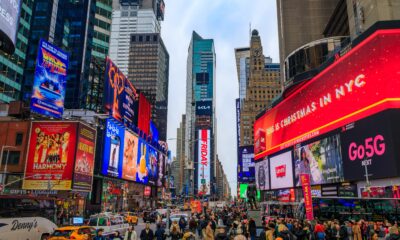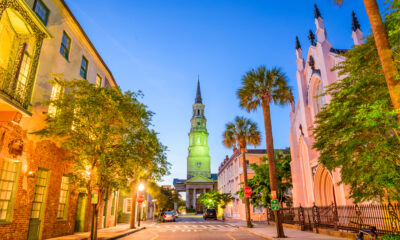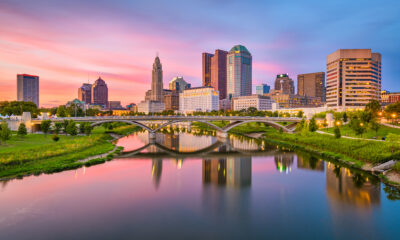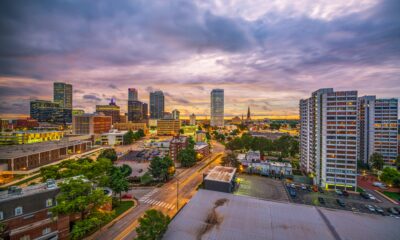Louisiana
New Orleans’ “Black Day” claimed 230 lives in 24 hours – and the rich of the 1850s couldn’t escape
Published
36 minutes agoon

The Garden District’s Deadly Yellow Fever Catastrophe
In 1853, New Orleans faced its worst enemy yet: yellow fever. The outbreak killed over 8,000 people, with 230 deaths on the worst day alone.
Even the rich Garden District, built just 20 years earlier, couldn’t escape. While 50,000 fled the city, those left behind faced horror.
The fancy homes with their bird baths and pools turned into perfect spots for mosquitoes to breed. At Lafayette Cemetery No. 1, bodies piled up faster than workers could bury them.
The Garden District today stands as a haunting reminder of how nature can humble even the wealthiest neighborhoods in America.

The First Yellow Fever Case Went Unnoticed for Weeks
On May 28, 1853, an Irish immigrant showed up at Charity Hospital throwing up black stuff. He died within hours, marking the first yellow fever case in New Orleans that year.
Local papers had just called the city “disease-free” that same evening. The deadly fever spread quietly through the crowded Irish Channel neighborhood for weeks.
Doctors and newspapers kept quiet about the growing threat until mid-July, by which time over 1,000 people had already died without any public warning.

Thousands Fled as the City Emptied
By June 1853, nearly 50,000 of New Orleans’ 150,000 residents packed up and left town to escape the spreading sickness. Rich Garden District families went to countryside homes during the worst mosquito months.
Business stopped as shop owners closed up and moved to rural areas. Poor Irish and German newcomers couldn’t afford to leave the city.
The busy port turned into a ghost town with empty streets and closed shops as deaths kept climbing.

Garden Mansions Created Perfect Mosquito Homes
The Garden District’s rich folks built their big houses with lots of space between them, thinking this would protect them from the “Saffron Scourge. ” They got it wrong.
Their pretty yards created perfect breeding spots for mosquitoes.
Pools, bird baths, and water tanks filled with standing water became nurseries for the Aedes aegypti mosquitoes that carried the disease.
The fancy water features that showed off their wealth turned into deadly disease spreaders.

August Brought Death in Record Numbers
August 1853 saw the worst of the outbreak hit New Orleans.
The death count reached 230 people on what locals called “Black Day” – the deadliest 24 hours of the outbreak. About 1,300 people died weekly during the peak.
Bodies piled up faster than gravediggers could handle them. Chain gangs of enslaved workers got $5 per hour to dig mass graves around the clock.
Gravediggers drank alcohol non-stop to cope with the awful smell and horror they faced daily.

The Cemetery Couldn’t Keep Up with Bodies
Lafayette Cemetery in the Garden District held 150-250 funerals every day during the worst weeks. Bodies stacked up at the gates when workers couldn’t bury them fast enough.
The above-ground tombs worked like natural ovens in the hot Louisiana summer heat. Group tombs built for German, Irish, and Italian immigrants filled quickly as newcomers died without family plots.
The cemetery reached its limit within decades of opening due to so many epidemic deaths.

Not Everyone Faced the Same Risk of Death
Yellow fever hit different groups in very different ways. About 7.4% of white residents who caught yellow fever died, while only 0. 2% of Black residents died from the disease.
Recent Irish and German immigrants suffered the worst fate – one-fifth of all Irish-born residents died that summer.
Many enslaved and free Black residents had protection from earlier exposure to African strains of the disease. The rich escaped while the poor stayed trapped in the deadly city.

Streets Turned into Disease Highways
New Orleans’ infrastructure completely failed during the epidemic. Gutters filled with garbage and human waste spread throughout streets with each heavy rain.
About 80% of city streets remained unpaved, creating puddles everywhere after storms. People drank from water tanks unknowingly filled with mosquito larvae.
Drainage canals and dug-up soil from railroad building created even more breeding grounds. The city’s poor sanitation system proved totally inadequate for handling the crisis.

News of the “Necropolis” Reached Around the World
A Cambridge, England newspaper printed vivid descriptions of the devastation in the “Crescent City.”
Reports described an empty Canal Street with only “victims being taken to cemeteries” visible on the normally busy street. Foreign ports quickly put strict quarantines on ships from New Orleans, which ruined commerce.
Trade partners cut ties with the city at the first hint of disease. New Orleans got a worldwide reputation as “Necropolis” – the city of the dead.

Desperate Residents Tried Everything to Survive
Doctors tried treatments ranging from regular medicine to Marie Laveau’s voodoo practices as the death toll climbed. People burned tar in the streets and fired cannons into the air, trying to “clean” the air.
European and American doctors knew nothing about how tropical diseases spread. The “bad air theory” blamed evil vapors from dirty soil and humid air for the sickness.
No one knew mosquitoes carried the disease, which led to completely useless prevention methods.

The Final Count Shocked the Nation
When the epidemic finally ended with cooler weather, the final death count reached between 7,849 and 9,000 people from a city population of 154,000 residents.
Nearly 30,000 people caught the disease during the summer months. This meant 5-6% of the entire population died in a single season.
It became the deadliest epidemic in New Orleans history, with a devastation level comparable to the medieval Black Death in European cities. The city took years to recover from the population loss and economic damage.

Dr. Barton Led the First Public Health Study
Dr. Edward Hall Barton headed the Sanitary Commission to investigate what caused the epidemic.
The commission published a 600-page report in 1854 with detailed sanitation reforms for the city.
Their recommendations included proper waste disposal, regular street cleaning, drainage improvements, and quarantine systems.
Barton’s statistical analysis connected death rates to water and soil conditions throughout different neighborhoods.
The report became the first comprehensive public health study in New Orleans history, though the mosquito connection remained unknown for decades more.

Visiting Garden District Mansions, Louisiana
You can explore the Garden District mansions that survived the deadly 1853 yellow fever epidemic by taking the St. Charles Streetcar from Canal Street for $1.25.
Walking tours run daily at 10am and 2pm for $35, or you can walk the streets for free.
Check out the Buckner Mansion at 1410 Jackson Avenue, built in 1856 and featured in American Horror Story. Lafayette Cemetery No.1 remains closed until late 2025, but you can view it from outside the gates.
This article was created with AI assistance and human editing.
Read more from this brand:
John Ghost is a professional writer and SEO director. He graduated from Arizona State University with a BA in English (Writing, Rhetorics, and Literacies). As he prepares for graduate school to become an English professor, he writes weird fiction, plays his guitars, and enjoys spending time with his wife and daughters. He lives in the Valley of the Sun. Learn more about John on Muck Rack.


This clever Marine cheated his way into WWII, then spent 22 years rebuilding Honolulu

At 17, she shot a Union soldier in her foyer – then became the Confederacy’s deadliest spy

New Orleans’ “Black Day” claimed 230 lives in 24 hours – and the rich of the 1850s couldn’t escape

How empty-handed Yankees from Montana branded this Idaho gold country forever

Cozy fall escapes and Oktoberfest fun in Leavenworth this October

12 Reasons Why You Should Never Ever Move to Florida

Best national parks for a quiet September visit

In 1907, Congress forced Roosevelt to put God back on U.S. coins. Here’s why.

The radioactive secret White Sands kept from New Mexicans for 30 years

America’s most famous railroad photo erased 12,000 Chinese workers from history
Trending Posts

 Pennsylvania5 days ago
Pennsylvania5 days agoHere Are 12 Things People from Pennsylvania Do That Seem Insane To Everyone Else

 North Carolina6 days ago
North Carolina6 days agoHere Are 12 Things People from North Carolina Do That Seem Insane To Everyone Else

 Maine7 days ago
Maine7 days agoThe ruins of a town that time forgot are resting in this Maine state park

 New York6 days ago
New York6 days agoHere Are 12 Things People from New York Do That Seem Insane To Everyone Else

 South Carolina4 days ago
South Carolina4 days agoHere Are 12 Things People from South Carolina Do That Seem Insane To Everyone Else

 Ohio6 days ago
Ohio6 days agoHere Are 12 Things People from Ohio Do That Seem Insane To Everyone Else

 Utah3 days ago
Utah3 days agoHere Are 12 Things People from Utah Do That Seem Insane To Everyone Else

 Oklahoma5 days ago
Oklahoma5 days agoHere Are 12 Things People from Oklahoma Do That Seem Insane To Everyone Else
